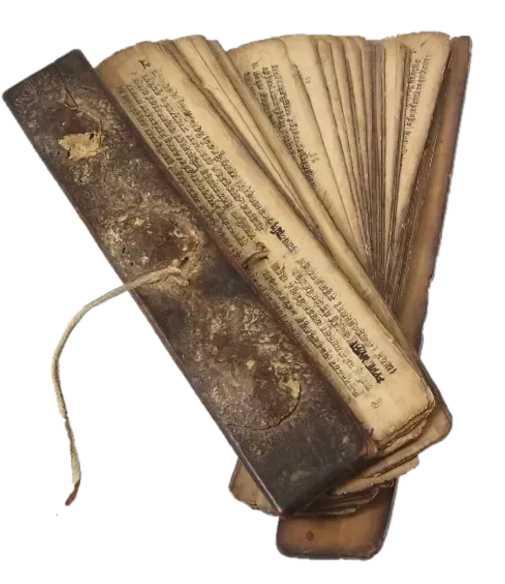Tantra Sāra 1.030 and 1.031
समासव्यासयोगेन व्याहृत्यादीनां चतुष्टयम्। सत्यं चाङ्गानि तारस्य प्रोच्यन्ते अष्टाक्षरस्य च। क्रुद्धमहावीर द्युसहस्रसहितोल्ककाः ॥३०॥
चतुर्थ्यन्ता हृदादीनि पृथग्रूपाणि तानि च। विष्णोरेवात्यभेदेपि तदैश्वर्यात् तदन्यवत् ॥३१॥
[samāsavyāsayōgēna vyāhr̥tyādīnāṁ catuṣṭayam। satyaṁ cāṅgāni tārasya prōcyantē aṣṭākṣarasya ca। kruddhamahāvīra dyusahasrasahitōlkakāḥ ॥30॥]
caturthyantā hr̥dādīni pr̥thagrūpāṇi tāni ca। viṣṇōrēvātyabhēdēpi tadaiśvaryāt tadanyavat ॥31॥
[samāsavyāsayōgēna = by the joining of compounds and divisions; vyāhr̥tyādīnāṁ catuṣṭayam = the four vyahrtis; satyaṁ = then with 'satyam' sound; cāṅgāni = and, the body parts; tārasya = for the pranava mantra; prōcyantē = are pronounced; aṣṭākṣarasya = for eight letter mantra; ca = and; kruddhamahāvīra = Krudh i.e. angry, Mahā i.e. the great, Vīra i.e. Valorous; dyusahasrasahitōlkakāḥ = Dyu i.e luminous, Sahasra, i.e. thousand, ulka i.e meteors;]
[caturthyantā = up to the fourth limit; hr̥dādīni = beginning with the heart; pr̥thagrūpāṇi = distinct forms; tāni ca = and those;। viṣṇōrēvātyabhēdēpi = are of lord Vishnu only, non different from; tadaiśvaryāt = that oppulance; tadanyavat = that not otherwise;॥31॥]
"BhurBhuvavahSvah" - is the combined vyahriti; "Buhu", "Bhuvaha", and "Suvaha" are the divided vyahrtis. These four, along with the word 'Satya', are used for the Taraka mantra (Ōm), for instilling deity in body parts, starting from heart. For pronouncing the eight letter mantra (Ōm Namō Nārāyanāya), the divine forms the lord Vishnu, Krudha (angry), Mahā (the great), Vīra (Valorous), Dyu (luminous), Sahasra (thousand), in conjunction with 'ulka', i.e. shooting star are used. These forms are non-different from His opulence, or Him.
Traditional method of meditating on a mantra:
The sound of 'Mantra' is not just a simple sound, but is the sound that eternally exists and reverberates in the universe. By meditating on a 'mantra', the devotee tries to connect with that sound, and in turn, the force and the deity governing that sound. Usually, the meaning of the mantra is not explained, as it is beyond the grasp of the language. It is believed, by meditating on the 'mantra' the Mantra itself will reveal its form to the seeker. So meditation is a divine activity where the seeker invokes the divine. Hence, there is a preparatory process that is traditionally followed to make the mind and the body ready to receive the divine energy.
It is customary to perform
'anganyasa', i.e. instilling the deity in various parts of the body before starting the meditation. Specifically, for Pranva mantra (
Ōm), the five body parts are touched and purified by invoking the divine with the following mantras:
- Ōm Bhūhu, Hrudayāya namaha (touching the heart)
- Ōm Bhuvaha, Shirasē svāha (touching the top of the head)
- Ōm Suvaha, Shikhāyai aushat (touching the upper back of the head, where the tuft used to be!)
- Ōm Bhūrbhuvah Svaha, Kavachāya hūm (touch shoulders making a crossed armour)
- Ōm Satyam, Astrāya phat (clap with a feeling the weapon is discharged for protection of the meditation)
For eight letter mantra (
Ōm Namō Nārāyanāya), the five body parts are touched and purified by invoking the divine with the following mantras:
- Krodholkaya, Hrudayāya namaha (touching the heart)
- Maholkaya, Shirasē svāha (touching the top of the head)
- Verolkaya, Shikhāyai aushat (touching the upper back of the head, where the tuft used to be!)
- Dyulkaya, Kavachāya hūm (touch shoulders making a crossed armour)
- Sahasrolkaya, Astrāya phat (clap with a feeling the weapon is discharged for protection of the meditation)
